Bafia people
The Bafia (Baepak) people inhabit the Mbam region in the Centre Region of Cameroon. Their origins are said to be similar with those of the Bamun, Nso and Tikar people. A division during migratory movements caused the two sets of groups to settle in different areas. Later, the Islamisation of most of the Bamun territory further separated them. A yearly festival held in Fumban (Bamun territory) is considered by many to symbolize the recognition of their common heritage. The 3 groups often refer to each other as Manjaras which is synonymous to cousins.
Baepak | |
|---|---|
 Danse Bafia | |
| Total population | |
| 127,000[1] | |
| Regions with significant populations | |
| Centre Region (Cameroon) | |
| Languages | |
| Bafia | |
| Religion | |
| Catholicism | |
| Related ethnic groups | |
| Bamun, Tikar, Nso |
Their language is Bafia.
Names
A Bafia father will give his child a personal name to which his own name (patronyme) is appended. For instance, a father named "Keman a Ndiomo" may call his son "Bitegni a Keman". The "a" in the middle stands for "son of".
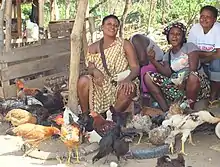
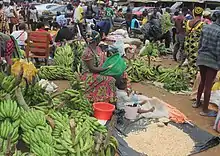
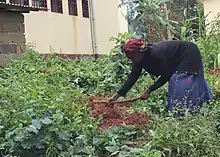
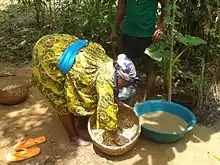

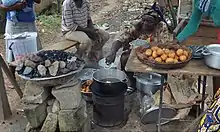
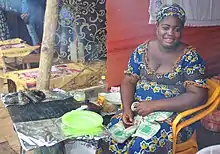


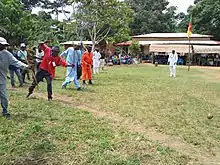
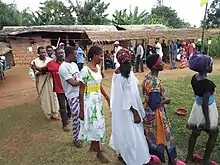
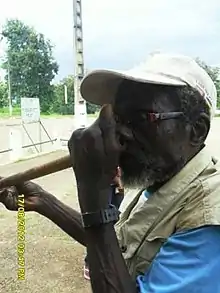
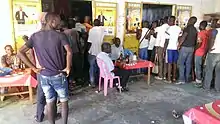
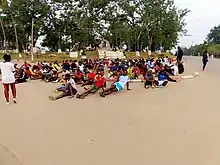

Dance
The traditional dance of the Bafia is seen to convey a sense of heightened excitement and joy through posture and facial expressions. Dances are traditionally held after successful harvests, although they may also be performed during engagements, weddings, and other official events.
Religion
The earliest recorded religious tradition amongst the Bafia was that everything in the world developed from an egg. Both feminine sexual forces, represented by a cave or hollow tree, and masculine sexual forces, represented by a snake or vine, were involved. There was no afterlife, God, nor sin.[2]
The turtle is respected as a traditional totem animal. There is an age-old belief that turtle shells are sacred and can be used to resolve disputes within the community. All those involved are required to lay their hands on the animal's shell as a way of eliciting the truth. The hands of the guilty party will then supposedly contract leprosy as punishment for evil deeds.
Today, the dominant religion is Protestant Christianity ("Mareucana" is the Bafia term), although a small section of the population has converted to Islam (for which the Bafia term is "Moussouloumi").
List of Bafia dishes
Bafia people, like many other ethnic groups in Cameroon, are mainly vegetarians.
- Bitosso (generally eaten with some sort of Maize pudding known locally as kipen (kipain))
- Kidjan (Kidjan ki Tchen)
- Gbarak (sticky saucy made with Okra and bush meat)
- Koum-koum
- Tien ti meukaaba
- Tien ti nguita (sweet potato leaves)
- Bichongneu
- Zaap (bita leaves)
- Bieeloe
- Mouleuk (for seasoning)
List of Bafia villages
- Bapep
- Biabiyakan
- Sanam
- Biamesse
- Biamo
- Bitang
- Dang
- Donenkeng
- Goufan
- Gouife
- Isèri
- Kiki
- Koro
- Lablé
- Mouko
- Nyamsong
- Nyokon
- Roum
- Rimis
- Rionon
- Tchekani
- Yakan
References
- "Bafia, Baepak in Cameroon". Joshua Project. Retrieved 5 May 2019.
- Boy-Wives and Female Husbands: Studies of African Homosexualities, edited by Stephen Murray & Will Roscoe. Published by St. Martin's Press in 1998. pp. 150- 151